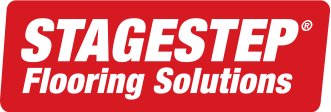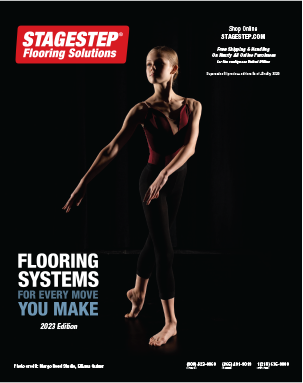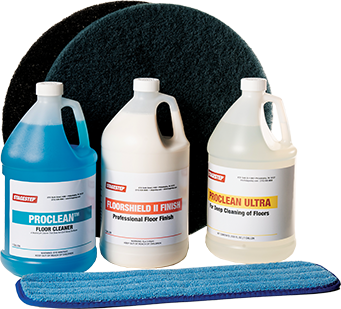You know there are no shortcuts in dance training and there are no shortcuts in securing the proper dance floor system for your studio. Before jumping in, it is a good idea to learn as much as you can about marley (vinyl) or wood dance floors, figuring out what you need, how to store it, transport it, install it and care for it. Without that information, you could find yourself dealing with a sedan when you really need a truck.
What’s Under Your Floor Is As Important As What’s On It
Beneath both marley and wood floors, should be a floating wood subfloor. Floating wood subfloors provide shock absorbency and lateral foot support for balance. Some ask if you can put marley floors over a carpet. The answer is no. You should also not put marley floors directly over concrete or rubber tiles.
Deal With The Real
Start with a reputable established dance floor company. They should have information, both written and online, that addresses all the concerns mentioned above. Their sales staff should be able to answer your questions and provide options that meet your needs or budget. Their website and printed materials along with samples can provide you with hands-on information.
Internet: Good And Bad
The internet can be a useful source of information. It can also lead you down the rabbit hole to dangerous materials and practices.
Tips To Buying Dance Floors
Only purchase real dance floors. Dance floor tiles are not designed for dance. Laminate floors are not good for dancing because they tend to be too slick, and difficult to maintain, and you cannot change the co-efficient of friction. The shower pan and pool liners are not floors. They carry no warranties or guarantees, they contain materials that are harmful to your health, and they expose you to lawsuits if someone gets hurt.
Vinyl or marley dance floors come in a variety of options:
-
- Reversible, with a soft pliable feel, is excellent for ballet, jazz and contemporary.
- One-sided dense marley designed for multi-purpose, percussive, covering tap, Irish step-dancing, break-dancing, and hip-hop.
- Foam-backed marley is excellent for ballet and appropriate for point shoes.
- Double foam-backed marley can be rolled out directly over concrete and works well with all forms of dance except tap due to the reduction of sound.
Not sure? Ask for samples or try it out first in another studio.
Follow the manufacturer’s recommendations regarding the maintenance of your flooring. Only use products designed for your dance floor.
-
- Most dance floors come without a manufacturer’s finish. Exposure to alcohol, ammonia, bleach, vinegar, abrasive cleaners, and many household cleaning agents will compromise your flooring.
Determine how long you expect your floor to be in one place. Then ask for the appropriate installation materials. There are methods for installation from a couple of days to forever.
-
- 1.5” to 2” vinyl or cloth tape on the seams and around the circular frame is considered a short-term temporary install usually employed for performances.
- 2” double-faced tape and top tape is primarily used in studios for 2-3 years. Note that the top tape must be changed every 4-6 months.
- 4” double-faced tape has up to a 5-year application range and does not require top tape.
- ReUseIt is a netting that uses suction to secure the floor to the subfloor. This can last for 10+ years.
- Adhesive is the permanent way to go when you own the building or if you have the deal with fluctuating temperature changes.
Moving or storing your floor?
There is a way to do it and ways to ruin it. Ask before you act. Stagestep has that information available online and in an installation booklet at Stagestep.com.
Temperature, humidity, and sunlight can impact the coefficient of friction, wear, and stability of your floor. Window treatments, humidity, or temperature controls can make a big difference in keeping your floor safe and lasting a long time.
Create and follow a maintenance schedule including daily, weekly, quarterly, and yearly chores.
-
- Dry mop the floor daily, wet mop with ProClean detergent/degreaser weekly and vacuum every two weeks.
- Remove dyes and scuff marks with WipeOut Plus.
- Deep clean with ProClean Ultra and a floor machine every three months.
- Use appropriate disinfectants during cold and flu season.
- If your floor requires additional attention, think about using Floor Shield II Finish, a yearly application reducer maintenance and keep the floor non-slip.
Maintenance frequency can vary depending on the size and number of classes per week.
Conclusion
Being informed eliminates bad choices, unnecessary frustration, and expense. Have a question or two? Call Stagestep at 800-523-0960 or visit us online at stagestep.com. We have installation and maintenance booklets and all the materials, samples, and information you need.





